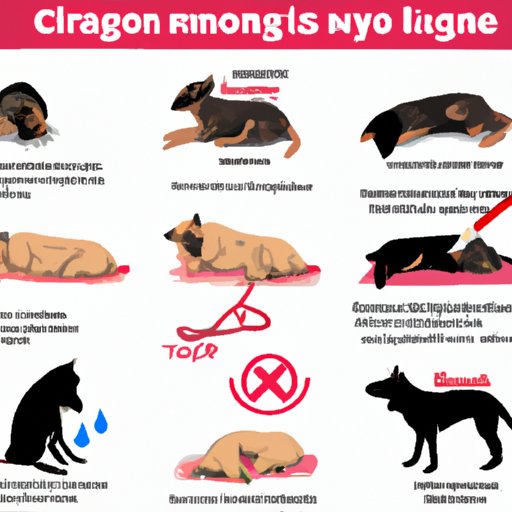
How Do You Know When Your Dog is Dying?
As pet owners, we all dread the thought of losing our beloved furry friends. However, it’s important to be aware of the signs and symptoms that may indicate that your dog is nearing the end of its life. Knowing what to look for can help ensure that you provide your dog with the care and support it needs during this difficult time. In this article, we’ll explore the various signs and symptoms to look for when your dog is dying, as well as the types of care that may be necessary and how to make end-of-life arrangements.
Signs and Symptoms
One of the most common signs that your dog may be dying is a loss of appetite. If your dog is no longer interested in eating or drinking, it may be a sign that its body is beginning to shut down.
Other signs and symptoms that may indicate that your dog is nearing the end of its life include:
- Severe lethargy or unresponsiveness
- Loss of bladder and bowel control
- Labored breathing
- Difficulty standing and walking
- Seizures or convulsions
- Significant weight loss
- Withdrawal from family members and other pets
If you notice these signs and symptoms in your dog, it’s important to take them seriously and seek the advice of a veterinarian.
End-of-Life Care
If your dog is nearing the end of its life, it’s important to provide it with as much comfort and support as possible. This may include providing a soft and comfortable place to rest and sleep, as well as administering palliative medications to help ease any physical discomfort or pain. Additionally, supportive care such as petting and comforting your dog can help alleviate emotional distress.
It’s also important to discuss end-of-life options with your veterinarian. They can provide information and guidance on options such as euthanasia, and can work with you to create a plan that meets your dog’s specific needs and ensures that it is as comfortable as possible during its final days.
Grief and Loss
Losing a dog can be a very difficult and emotional experience for both individuals and families. It’s important to remember that grief and loss are a normal part of the process, and that it’s okay to seek support and resources during this time.
Some strategies for coping with grief and loss may include talking to friends and family members about your feelings, seeking support from a counselor or therapist, and connecting with pet loss support groups in your community or online.
Quality of Life Considerations
When your dog is nearing the end of its life, it’s important to evaluate its current quality of life. This means considering factors such as pain levels, mobility, appetite, and the ability to engage in activities that it once enjoyed.
While it can be difficult to turn to end-of-life care options such as hospice care or euthanasia, it’s important to consider the potential benefits and risks of treatment options and discuss your concerns with your veterinarian.
Preparing for the End
Preparing for the eventual death of your dog can be a difficult and emotional process. However, creating a plan in advance can help ensure that you have taken all the necessary steps to provide your dog with the care and support it needs, as well as create a sense of closure for yourself and your family.
This may include planning a memorial or funeral service, deciding on a final resting place for your dog, and making any necessary legal arrangements in advance.
Importance of End-of-Life Planning
End-of-life planning is an important part of being a responsible pet owner. By having a clear plan in place for your dog’s care during its final days, you can ensure that it receives the care and support it needs to be as comfortable and peaceful as possible.
It’s important to discuss your concerns and wishes with your veterinarian and other family members, and to create a detailed plan that outlines the type of care you want for your dog during its final days.
Conclusion
Knowing when your dog is dying can be a difficult and emotional experience. However, by being aware of the signs and symptoms to look for and taking the necessary steps to provide end-of-life care, you can help ensure that your dog is as comfortable and peaceful as possible during this difficult time. Remember to seek support and resources if you are experiencing grief and loss, and to create a clear and detailed plan for your dog’s end-of-life care.





